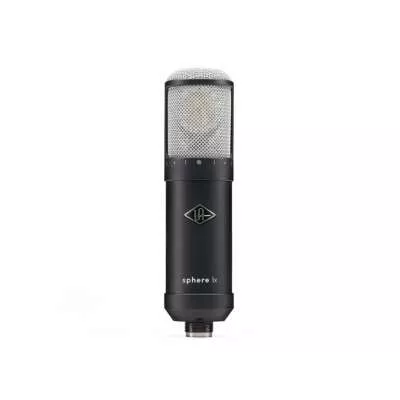We use cookies to make your experience better. By remaining on this website you indicate your consent. Learn more.
Universal Audio UA Sphere LX Modeling Microphone
Universal Audio UA Sphere LX Modeling Microphone
 FREE Shipping
FREE Shipping FREE Tech Support
FREE Tech SupportFREE UAD Essentials Edition
Buy any UA Microphone from RSPE Audio and get Free UAD Essentials Plug-in Bundle ($299 value). Offer Valid through 4/30/2024. SKU
MIC-UALX
$999.00
Easy finance available for this product.
Questions? Find a Better Price?
 Contact Us
Contact UsThe UA Sphere LX modeling microphone system is a Dual large-diaphragm condenser modeling mic that gives you the sound of classic mics used by everyone from The Beatles and Beyoncé to Radiohead and Frank Sinatra, in a smallern more affordsabel package.
Universal Audio’s Sphere LX condenser microphone features a variable dual-output polar pattern and advanced mic modeling technology, allowing you to record through 20 of the most legendary mics ever made.
UA Sphere LX Features:
- Record with 20 of the most sought-after microphones ever made
- Change mic type, polar pattern, and other characteristics, even after tracking
- Use Dual Mode for rich-sounding mic combinations on snare drums and guitar cabs
- Add the ultimate modeling mic to your collection, with dual gold-sputtered diaphragms and the lowest noise of any mic in its class
Grab the Keys to the Ultimate Mic Locker
Featuring 20 legendary mic models of Neumann, Telefunken, AKG, Sony, and more,* the Sphere LX gives your productions the most sought-after ribbon, condenser, and dynamic microphones ever made.
Find your Perfect Mic in Real Time with Apollo
The Sphere LX lets you audition classic mics before, during, and after recording with any interface, in any DAW. And when paired with an Apollo interface, you can do this with near-zero latency.
Use Dual Mode for Classic Mic Pairings
Blend the sound of two mono mics with Sphere LX's Dual Mode, and get rich-sounding mic combinations on snare drums and guitar cabs.
Reduce Room Sound for Better Recordings
Easily tame room coloration for cleaner, more professional recordings using IsoSphere and its expert presets tailored for everything from your bedroom studio to popular isolation filters from sE Reflexion Filters, Aston Halo, Kaotica Eyeball,* and more.
Built to Last a Lifetime
With dual gold-sputtered diaphragms and the lowest noise of any mic in its class, the Sphere LX outfits your studio with a premium, large-diaphragm condenser microphone, precision-built to deliver years of inspiration for your music, podcasts, and voiceovers.
Includes Everything you Need to Record
Right out of the box, the Sphere LX mic gives you a 10' cable, mic stand mount, and carrying case — so you'll be creating with the sound of legendary mics in no time.
| Manufacturer | Universal Audio |
|---|
Write Your Own Review

